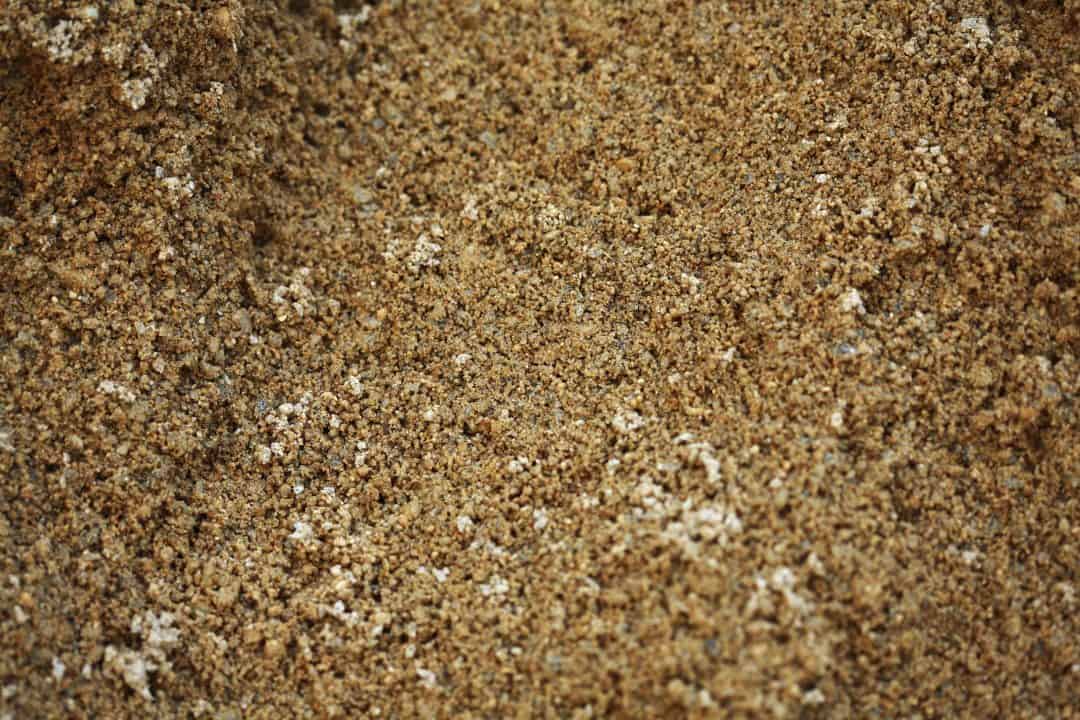Termites are known to be ‘Silent Destroyers’ this is because they often go unnoticed whilst they slowly damage your property. They’re especially a problem when attacking a cabin due to it’s wooden structure. Also, due to the rural environment, there’s likely to be higher population of termites near your cabin than there is in the city.
Often these critters will go unnoticed due to how small they are, and they don’t cause any immediate signs of damage. You may only find out about their presence, weeks into their infestation.
Infestations can cause devastating damages and are extremely difficult to stop once it’s already started. The process of repairing damage and exterminating termites can be very expensive. The most effective way to deal with termites is to prevent an infestation or at-least deal with the issue before it becomes a big problem. In this article I’ll be providing you with guide to prevent termites from ruining your cabin.
Reduce wood to ground contact
An effective way in preventing a termite infestation is to reduce the amount of wood to ground contact. This means that you should keep wood elevated from the ground. This is because when wood is in contact with the ground it tends to become moist. Termites are attracted to the moist wood.
Reducing wood to ground contact also makes it more difficult for termites to get into the wood. To keep any wood from the ground, you should have a footer made of a non-wood material such as concrete.
Eliminate or at least inspect high-moisture areas
As previously mentioned, termites are attracted to moisture. This means you don’t want to have any moist areas around your cabin. Moist areas will only attract them to your home.
Moisture can be caused by many different things such as leaky pipes, damp window sills and leaky water storages. If you cannot eliminate the damp area – you should inspect it often to ensure that it doesn’t become infested with termites.
I’d recommend that you regularly inspect around anywhere where water is present, or condensation may occur. For example, your water storage, your cabins roof, the path which your pipes take, around your air conditioning unit, by your refrigerator or freezer and around your shower/bathing area.
Another common area for dampness is your bathroom in the chance that your toilet is sweating. This is when condensation is caused by the difference in temperature of your home and your toilet tank.
The inspection process is key in identifying a termite infestation before it can become too big of a problem.
Use a termite barrier when you’re building your cabin
I highly recommend that you install a Termite Barrier. This is a first line of defense to prevent termites from getting into your property. This is an extremely effective way in preventing termites from being able to perpetrate your home.
There are many types of termite barriers. You can get either a physical barrier which includes basaltic particles or sand. Or you could get a chemical barrier which involve soil treatment.
Termite barriers come at different costs – depending on the size of your cabin, signs of past termite infestations, whether your cabin is pre- or post construction and the type of barrier which you want.
Avoid having wood materials by your cabin
As I had mentioned in one of my earlier points, you want to reduce the amount of wood to ground contact whenever possible. This does not only apply to the structure of your cabin itself but to any wood material which may be present around your cabin.
A common habit for cabin-stayers is to keep some firewood by their cabin to make lighting their campfires more convenient. Though this may be useful, it can also increase the likely hood of a termite infestation. Such wood will attract termites into the area. Because of this I’d recommend keeping your firewood locked away or at least 15 feet away from your cabin.
If you decide to keep your woodpile away from your cabin, you want to be cautious when bringing it back to your cabin as there may be termites hiding inside the wood. You don’t want to transport them into your home. The best way to prevent termites from making your woodpile their home is to keep it dry. You can do so by keeping them wrapped up or covered with a water-proof sheet. This isn’t only an effective way to prevent termites, but wood also burns easier when dry.
Use pesticide treatments in the soil such as Termidor
There’s many soil treatments which you can use to protect your cabin against termites and a wide range of other pests. There treatments are extremely effective and inexpensive –
I’d highly recommended Termidor. Labeled ‘Americas #1 Termite Defense Product’. Termidor is one of the most highly recognized soil treatments used by many professional firms. I don’t know any product that delivers more or works better than this product. There is simply nothing better!
Termidor blends into the soil around your cabin and creates a ‘Death Zone’ for all Termites. Within 90 days your home should be completely protected against such pests. Termidor will kill any termite which consumes or even encounters treated material. Termidor doesn’t affect humans in anyway and is aroma free.
You can view Termidor products here.
What should I do if I suspect Termites?
If you’ve done sufficient inspection, you may find signs of termites or even seen the pests themselves. There’s a few things which you can do to take care of the problem yourself before you resort to calling exterminators.
Identify how they’re getting in
The first step in treating a termite infestation is to identify how and where they’re getting into your cabin. You won’t be able to stop them unless you find out how/where they’re getting in from as you could kill them all, only for more to return a few days later.
I’ll be listing a few signs which can help you identify their entry points:
- Termite droppings: Just like any other animal, whatever goes into a termite – must come out. Meaning that they leave droppings in their path. You can use their droppings to identify where they’re coming in from. For example, if you find termite dropping in a corner of your cabin – chances are that the termite is coming in from somewhere in that area. So, check under furniture, check the walls, ceiling, and floors in that area.
- Small holes in wood: Termites eat their way through wood so if you find small termite sized holes in your wooden wall – then you know exactly how they’re getting into your cabin. Small holes aren’t always a confirmation of termite activity as the holes could have been caused by other things or have already been present in the logs before the cabin was built. Because of this, you should continue to look for further signs and keep an eye on the holes to determine if anymore are created.
- Mud Tubes: Termites will often create thin mud tunnels to protect themselves whilst they travel around. These tubes are very noticeable and easy to spot. They appear like a trail of mud along surfaces. Imagine what it looks like to spill some hot chocolate against the wall. If you find these trailing along the side of your cabin, then you can be certain that you have a termite infestation.
Common places to check:
- Attics: Many people forget to check their attics, especially if they don’t use it. This makes them a good place for termites to get into as they can live in peace and eventually make their way into your cabin.
- Porches: Your porch is an easy place for termites to crawl into as it’s often left exposed and not protected by any walls. From your porch, they can then look for cracks or make holes in your cabin walls – even crawling under your door if possible.
Fill in Cracks
If you can identify any cracks or holes in your cabin which termites could be using to enter your home, you should fill them in and repair them as soon as possible.
Before you fill in any cracks or entry points, you should do a quick inspection to ensure that there isn’t anything inside the holes If there is then you’ll need to clean it out. You can fill in such cracks with expanding insulation or backer rod.
Use Termite Poison
Termite poison is one of the most effective ways to get rid of Termites. There’s a wide variety of them on the market however only a few which I’d recommend. I’ve used many different products and found the ones which work the best.
As previously recommended, the brand Termidor has some great products with low price tags. Termidor have a foam spray which can be found here. Termidor foam is sprayed into holes and mud tunnels created by Termites. This foam will kill anything inside of the holes and anything which enters the holes. This is an extremely effective product which I’ll recommend to anyone who identifies signs of Termite activity. Spectracide is another well-known brand with a few great products. They too have a Termite killing foam, which is good, but I don’t think it’s as effective as Termidor’s.
Spectracide do however have a ‘Killing Stake’ product. This is a stake which digs into the ground and lures and kills termites. This is a great product which can be installed in just a few minutes with no professional help. The Killing Stake also features a termite indicator which will let you know if there are termites in the area. This product can be found here.
I’d also like to quickly touch on Termidor’s Soil Treatment again. Termidor is one of the most highly recognized soil treatments used by many professional firms. This soil treatment is by far the best way to get rid of Termites – outdoing both their foam spray and Spectracide’s Killing Stake. The soil treatment also kills a range of other pests.
Call an Exterminator
If all else fails or you have the money to blow – calling an exterminator will provide you with the ultimate peace of mind. These services aren’t cheap however exterminators will get the job done professionally. Therefore, I’d only call an exterminator as a last alternative due to their expensive rates.
A small or early stage termite infestation can be easily corrected on your own with the products I’ve previously recommended however if your termite infestation has already progressed to the point where your cabin is falling apart, calling an exterminator may be your only option left.
Leave a comment for me!
If you have any questions for me on this topic, I’ll be more than happy to reply. Also, if you have any constructive criticism or feel as though I’ve left something out -let me know below!
My name is Eugene Thornhill. I'm an outdoor enthusiast who loves nothing more than being one with nature. I've lived in numerous outdoor homes and even constructed my own. Living off-grid is something I'm very familiar with, more so than living in the city. For many years I've dealt with the many problems of living off-grid. It's time to pass on my knowledge through Cabinguides.


